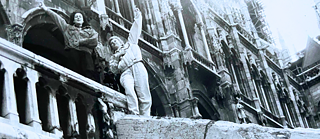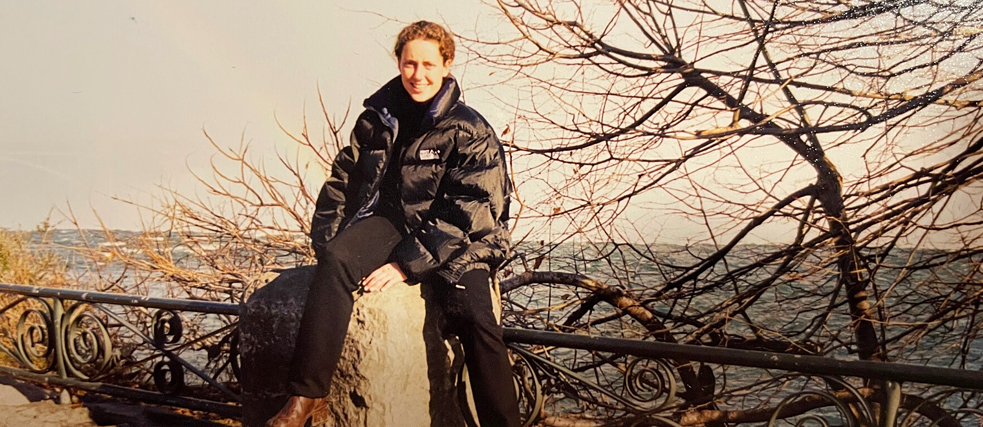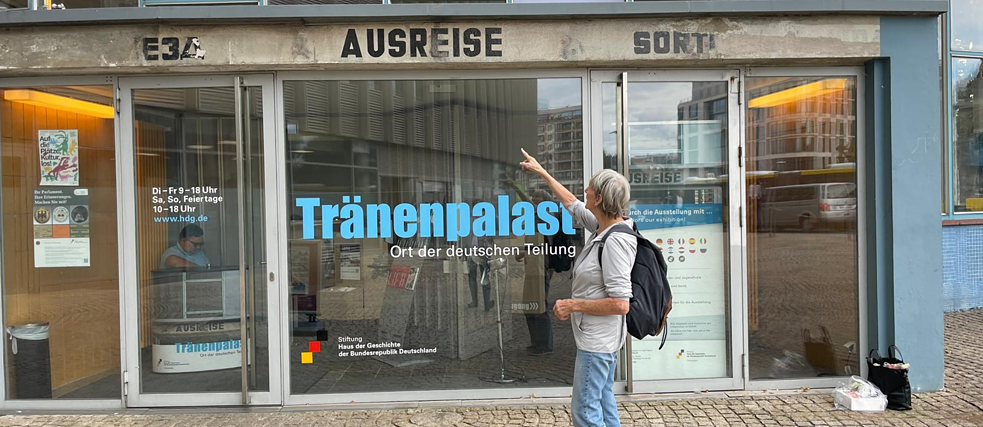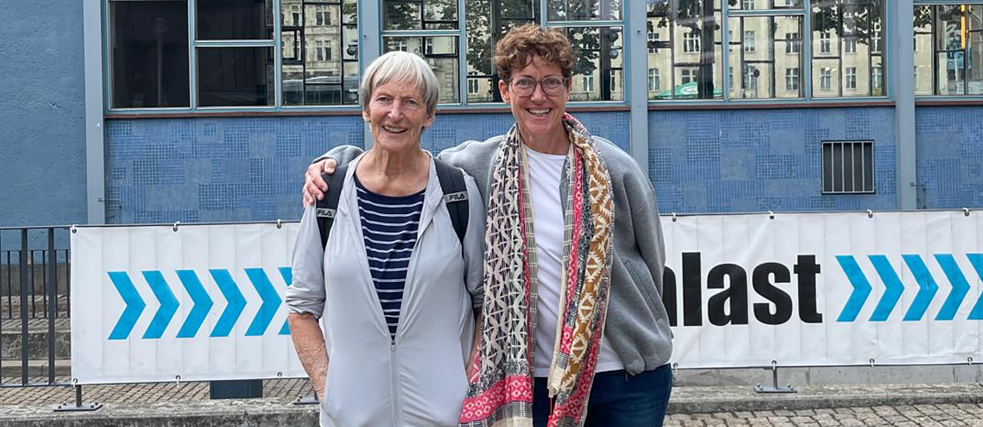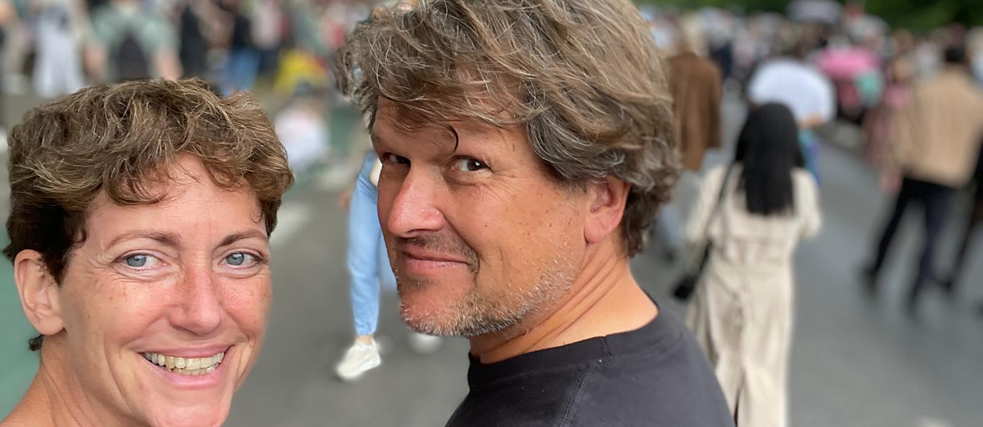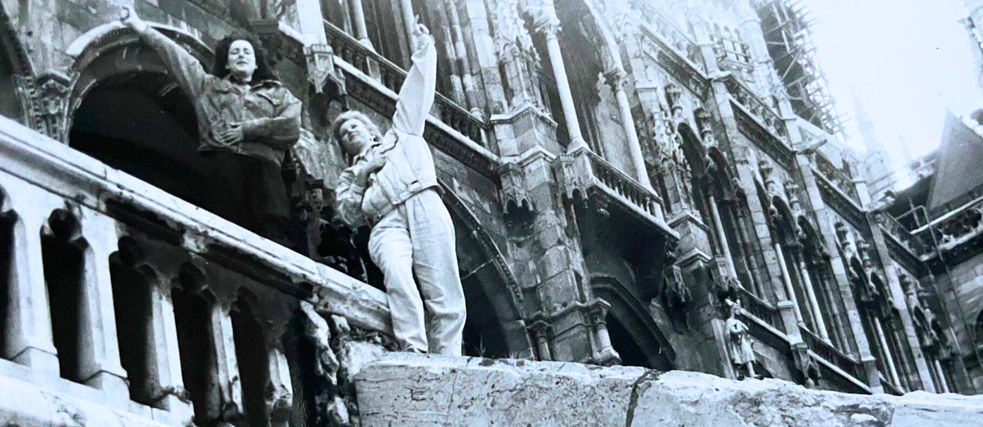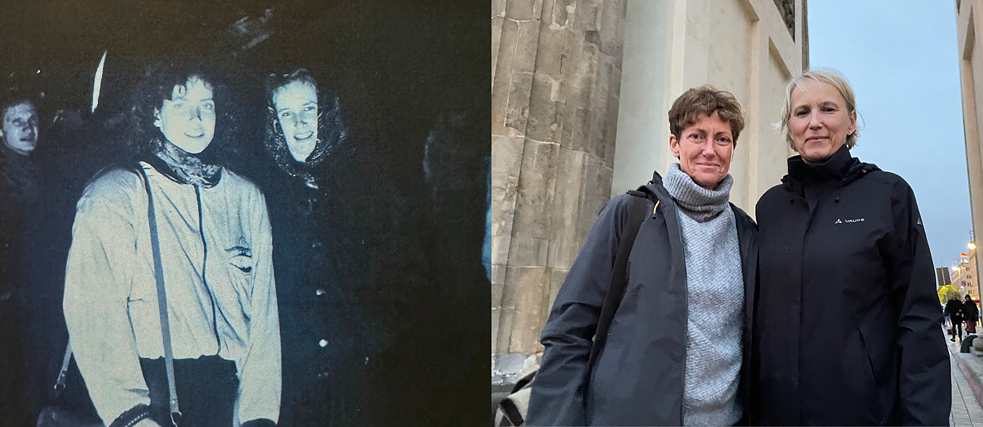In late 1980s East Berlin, a sense of change was in the air. However, the opening of the border to West Berlin on the night of November 9 to 10 took many by surprise. Heidi, a lifelong Berliner who grew up in the city’s eastern half, shares her unique account of that historic night.
A circus performer opened the door to the world for me. When I was about ten years old, growing up in East Berlin, I read "The Great Blondin”, the story of French acrobat Charles Blondin, who crossed Niagara Falls on a tightrope. This tightrope walker even appeared in my dreams. What captivated me wasn’t only the thrill of tightrope walking, but also the vivid descriptions of the breathtaking landscape around the immense falls. Naturally, I began dreaming of one day going there to explore the place myself.But here I was— a little girl from East Berlin in the early 1980s, a passionate and skilled gymnast, only permitted to compete in the so-called “non-Western” countries. I would have to wait until retirement age, 65 years, for a trip to Niagara Falls. I couldn’t comprehend it.
Change was in the air
Then, in 1989, I was of the right age, at the right time, in the right place, when things began to change. People gathered in churches to discuss ways to bring about political change, and these groups quickly grew, filling every available space and even between the aisles with listeners. In the summer of 1989, more and more people crossed the border into Hungary and jumped over the fence in what was then Czechoslovakia, escaping with the help of the West German embassy. Change was in the air. Now, you could even apply for a passport, which seemed almost pointless due to strict travel restrictions. Yet, many people still filled out an application, including me. At the time, I was 18 years old.Then came November 9, 1989—and suddenly my dream started to come true. As I was returning home from gymnastics training with my mother (who was also my coach), we saw the news on TV and were astonished: A press conference was being broadcast live, announcing that anyone with an ID could cross the border into West Germany/West Berlin. When would this take effect? Immediately!
We could hardly believe it, but around 11 PM, we decided to see for ourselves. My brother, skeptical, simply rolled over in bed. We headed to the "Friedrichstraße" border crossing, also known as the “Palace of Tears” because so many farewells had been said there, as loved ones departed East Berlin/East Germany, some for a short visit, others forever. The atmosphere on the train to Friedrichstraße was beyond words. Faces around us were alive with excitement, yet tinged with disbelief, as if we were all silently questioning whether the long-held dream of freedom to travel could really be happening. We did not allow ourselves to acknowledge the alluring feeling of joy yet. After standing in line for over an hour, we finally received a stamp in our IDs and crossed the border. It was past midnight on November 10, 1989, and I found myself standing in West Berlin.
The first things I noticed were the blue glow of the subway sign and the lights from the large church near the “Zoologischer Garden” station. My idea of the West had been different — perhaps more “sparkling”. Nevertheless, I was impressed by all the different cars. That night, West models mingled with Trabis, Wartburgs, Skodas, and Moskvichs. Free beer was offered everywhere, and strangers hugged and celebrated each other— what a night!
We have to go now
We traveled back home around 4 AM and woke my brother, who couldn’t believe what we told him about our last hours in West Berlin until he checked the stamps in our passports. It took him less than five minutes to leave our apartment and head out himself.That day at school, we had Russian class in the so-called zero hour (the earliest class of the day). Everyone was in a hurry and rumors were whispered in the classrooms: “We need to go now. They’re closing the border at 8 AM.” Tired as I was, I replied that I had already made my first excursion to West Berlin and was met with surprised looks. Our book of attendance noted that day: “Only three present due to border opening.”
Most people didn’t go to school or work the day after that press conference—a special day following a truly unique night that changed the lives of many, including mine.
Instead of studying sports science at the University of Leipzig, I trained to be a foreign language secretary, earning enough to spend a year as an au pair in the USA and eventually travel the world. And yes, I made it to Niagara Falls—a wonderful and intense experience. I’m grateful I was able to take that trip long before reaching retirement age.
With my gymnastics group, we participated in many competitions in various countries— to this day, we still enjoy meetings togethers taking a stroll down memory lane, reminiscing those fantastic times. November 9 is a very special day for me for other reasons, too. It’s the day, some years later, that I met my husband, Sebastian, who shares my love for sports and travel. Together, we have a son, Max, and spent several years living in Phoenix, Arizona, and New York City after winning the Green Card lottery. During our travels, we met new and fascinating people—global friendships that last a lifetime.
I am deeply grateful for the historic turning point of 1989. Many of my dreams have come true, and I look forward to continuing to explore, learn, and enjoy a life without the border that divided Germany in two.
